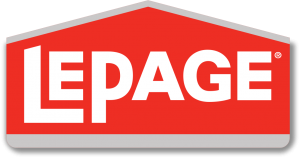Your kitchen backsplash may primarily be functional, protecting the wall behind your sink and counters, but that doesn’t mean it can’t add a pop of color or visual interest to your kitchen. Depending on the area you’re working with, your backsplash can actually be a dominant design feature within your space. And while backsplashes are traditionally made of ceramic or porcelain tile, you don’t have to limit yourself to a tiled design. Now, there’s much more on the market, including stone and marble slabs, and even metal. In this article, learn more about what’s possible, and get a step-by-step guide on taking on a backsplash refurb for your next DIY project.
Narrow In On Your Design
Get the creative ideas flowing by looking for backsplash inspiration that makes sense within your existing kitchen—or that can be a jumping-off point for a bigger kitchen remodelling project. Think about finishes that make sense within your design. For instance, for a uniform, minimalist look, you could the same stone or concrete slab for both your countertops and your backsplash. For a more distinctive backsplash, you can use coloured artisan tiles in conjunction with open shelving to really show off the tile work. Think about how you use the space, too. For instance, slabs of veined marble backsplash will be easier to clean than subway or mosaic tiles. One way to bring the space together is to use the same material for your sink backsplash as for the backsplash behind your stovetop.
Gather Your Supplies
Whether you’re working with tile, mosaic tile, larger stone slabs, or metal, your tools and products will be similar. Just ensure you get the best type of adhesive for the material and weight you’re working with. If you’re using tiles, you’ll want to use a wet tile saw or a diamond blade attachment for a circ saw, or rent one from your local home hardware store. This ensures your tiles can be cut to fit the full area you’re working with, including edges, and any areas around outlets or other permanent features. In addition, you’ll need:
- Cloth or sponge, for removing dirt and residue from walls
- Sandpaper, to smooth the wall before application
- Adhesive spreader and/or notched trowel
- Level
- Utility knife (if working with mosaic tile sheets)
- Metal snips (if going for a sheet metal backsplash)
- Adhesive, such as LePage’s PL Heavy Duty Sealant (for tiles) or PL Premium Fast Grab (for mosaic tiles)
- Tile grout, such as LePage’s Polyfilla Wall Tile Grout
- Grout spacers (optional)
- Mildew-resistant caulking, for any crevices between walls and counters
- Safety gear
Applying Tiles
First, clean the wall you’ll be applying your tiles, let the area dry, then sand where necessary to create a smooth, flat surface. Determine the best way to place the tiles in the area you’re working with by measuring your wall. Use a level to ensure each layer of tile is applied straight and in line with your countertop. Once you’re ready to apply your adhesive, like LePage’s PL Heavy Duty Sealant, you’ll apply it to both the backs of the tiles and the wall. Work from the center of the area outward in small batches so your adhesive doesn’t dry out, and if necessary, use grout spacers to help keep your tiles even more accurately aligned as you work. Press each tile firmly before moving on to the next.
Once your tiles are in place, it’s time to apply grout. Apply the grout at 45-degree angles to the tiles, let the grout sit for 10 minutes, then wipe away excess with a wet sponge. Your final step is to apply mildew-resistant caulk, if necessary, to any gaps between your countertop and backsplash. Your adhesive will take about 12 hours to dry, and will be fully cured in about 14 days.
Applying Mosaic Tiles
They may sound like the most labor-intensive backsplash choice, but fortunately, most mosaic tiles now come in sheets, greatly reducing the time you’ll spend applying them. The process is similar to working with other types of tile. Choose PL Heavy Duty Sealant, a great option for mosaic, and remove the mesh from each tile sheet after you apply them, using a utility knife. Then, follow the steps above when you’re ready to apply grout and caulking.
If You Choose Slab Over Tile
If you’re working with larger slabs of marble or granite, as opposed to tiles, for your backsplash, go with LePage’s PL 620 Granite & Marble construction adhesive, specifically designed for heavier materials in high-moisture areas like kitchens and bathrooms. PL 620 bonds to a wide variety of materials, including stone, drywall, plywood, and treated plywood. Once your slabs are cut to size for your backsplash, the prep and process will be the same as working with tile, only faster.
Working With Metal
If you’re going for something really bold, like a copper backsplash, your design choice will pay off, as this option requires less time and precision than working with tile or heavier materials. Copper or other metal sheeting is typically between 10 and 22 mm thick. Thicker sheets work better for walls that aren’t perfectly flat. You can apply the sheeting directly to the wall, or to a backboard first. LePage’s Gel Epoxy is great for use with metal sheeting. Apply the adhesive along the perimeter and interior of the metal in vertical or horizontal lines a few inches apart. Press into place, and follow the caulking steps in the above tile section for any gaps that may require it.



